A popular instrument for court musicians, bards and amateurs, the gittern
The gittern was a relatively small gut-strung, round-backed instrument that first appears in literature and pictorial representation during the 13th century in Western Europe (Iberian Peninsula, Italy, France, England).
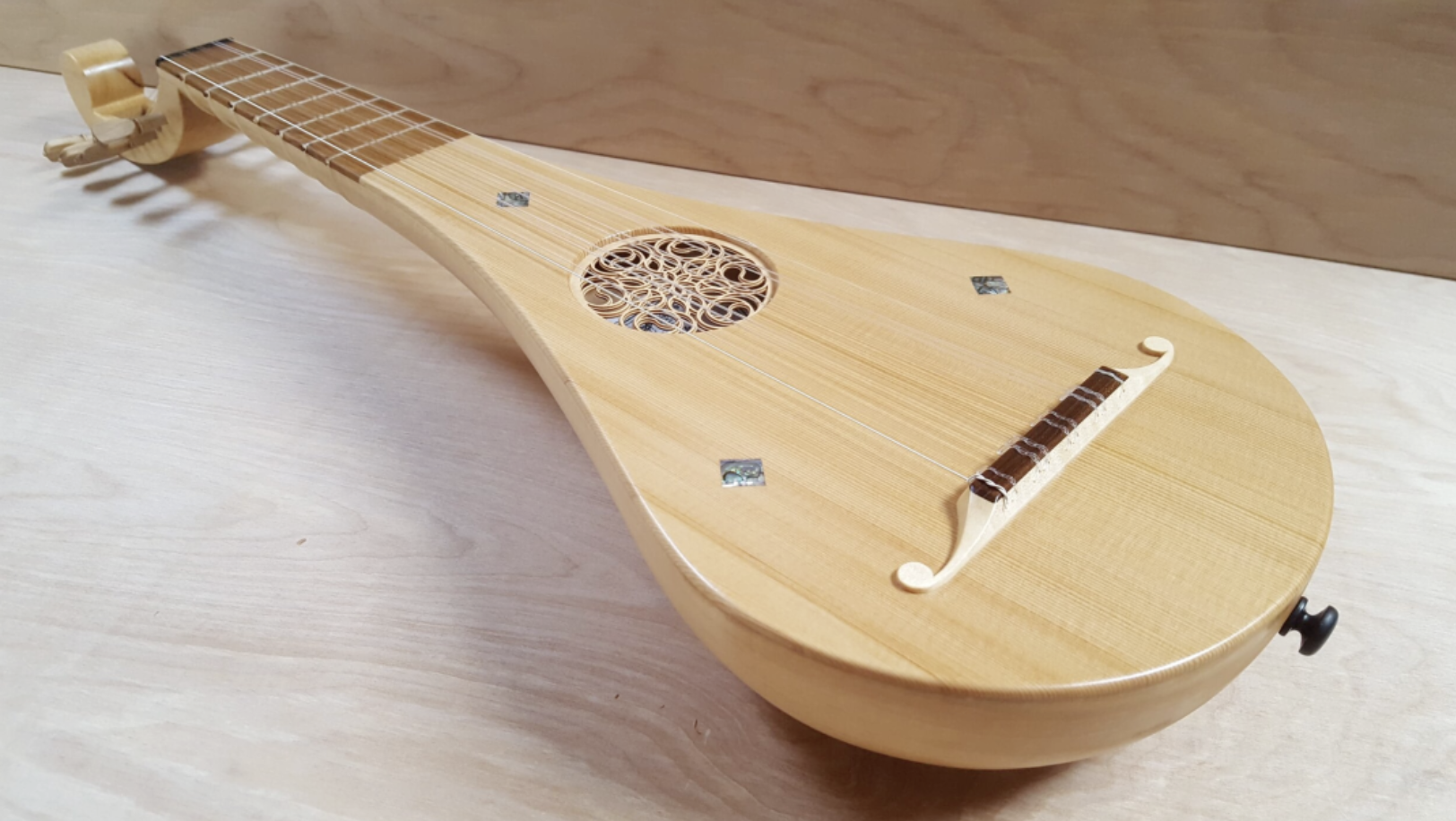
It is usually depicted played with a quill plectrum, as can be seen clearly beginning in manuscript illuminations from the thirteenth century. It was also called the guiterna in Spain, guiterne or guiterre in France, the chitarra in Italy and Quintern in Germany.

A popular instrument with court musicians, minstrels, and amateurs, the gittern is considered an ancestor of the modern guitar and other instruments like the mandore, bandurria and gallichon.
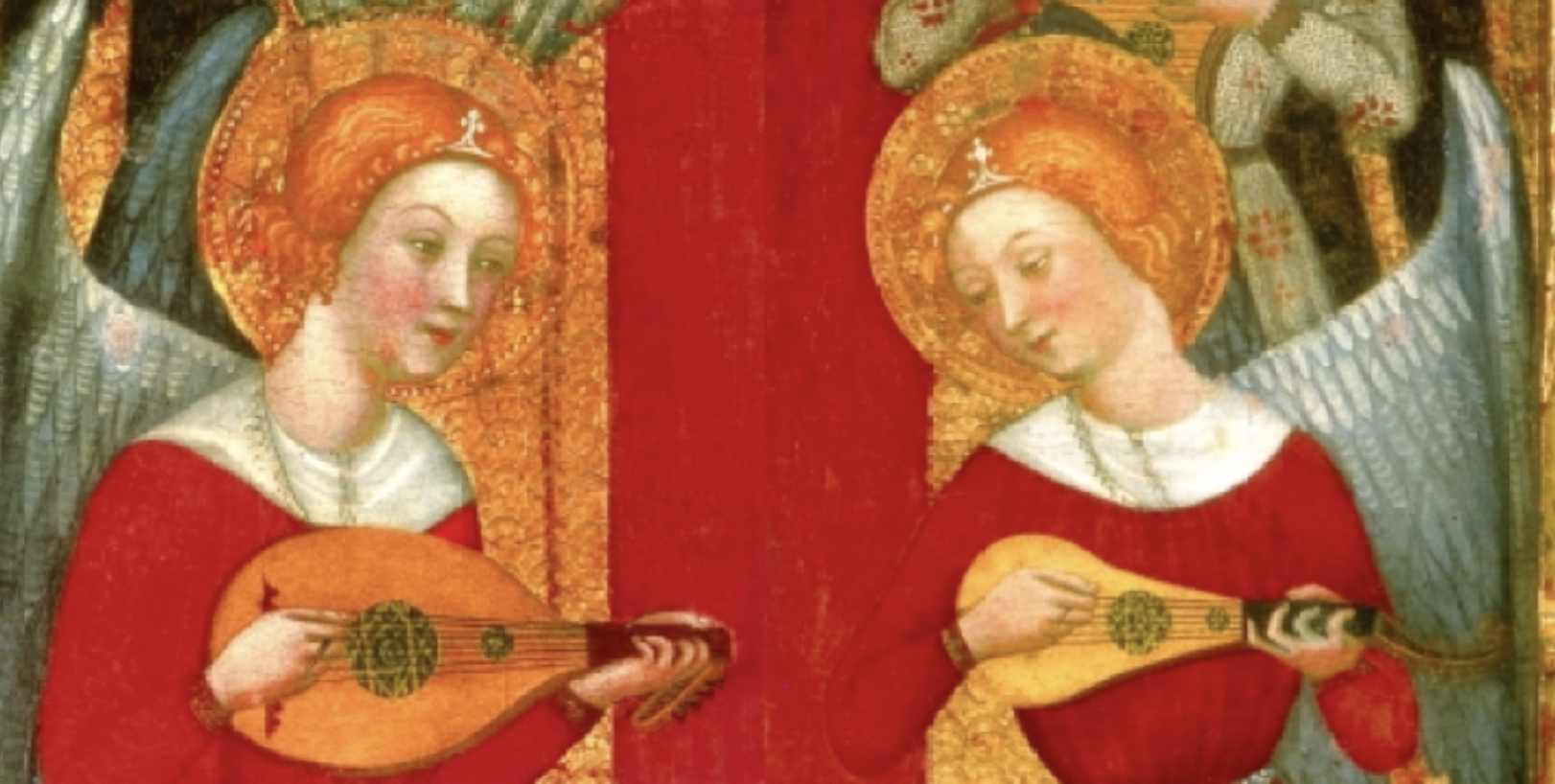
From the early 16th century, a vihuela-shaped (flat-backed) guitarra began to appear in Spain, and later in France, existing alongside the gittern. Although the round-backed instrument appears to have lost ground to the new form which gradually developed into the guitar familiar today, the influence of the earlier style continued.
Examples of lutes converted into guitars exist in several museums, while purpose-built instruments like the gallichon utilised the tuning and single string configuration of the modern guitar. A tradition of building round-backed guitars in Germany continued to the 20th century with names like Gittar-Laute and Wandervogellaute.
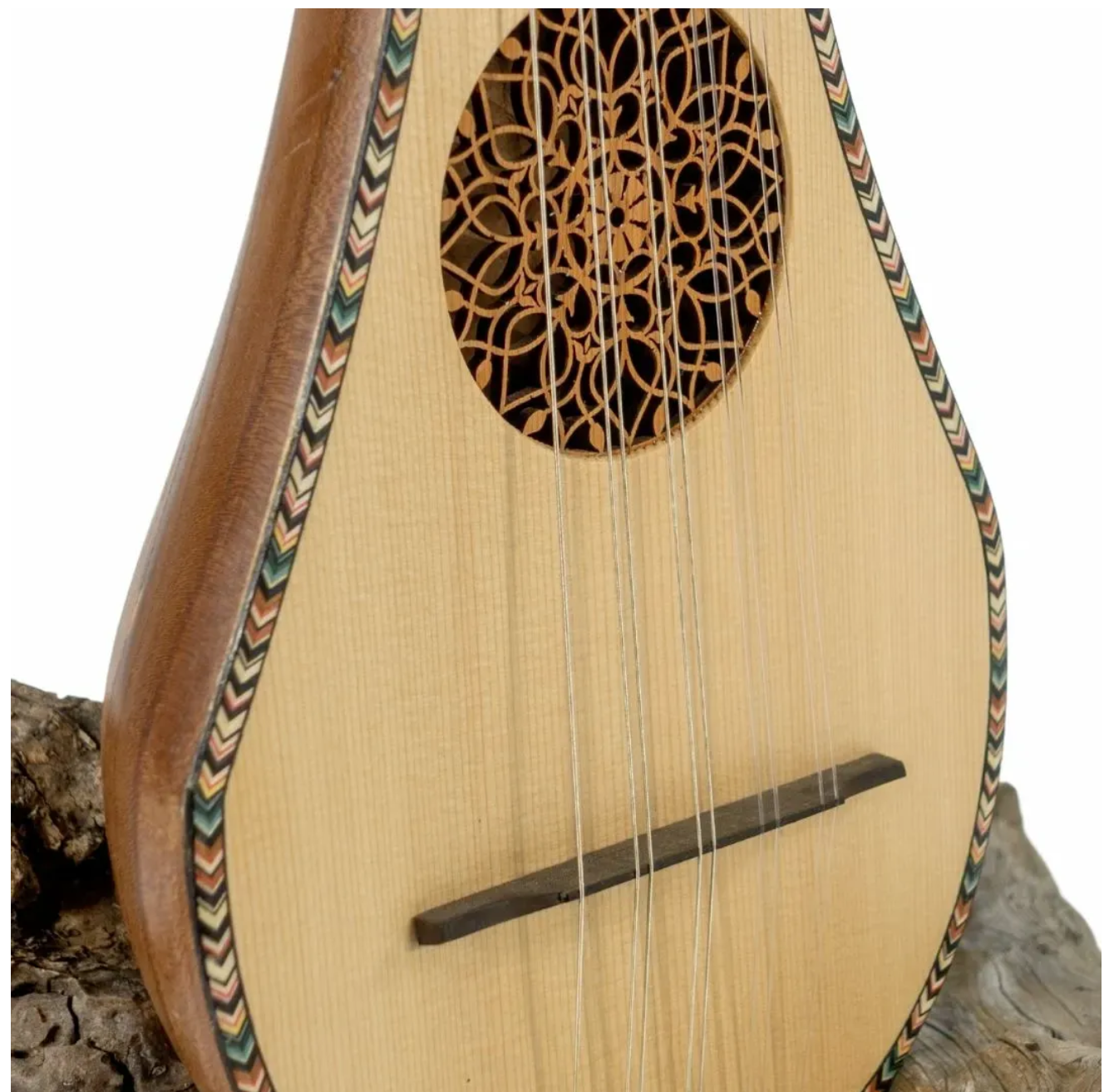
Up until 2002, there were only two known surviving medieval gitterns, one in the Metropolitan Museum of Art (see external links), the other in the Wartburg Castle Museum. A third was discovered in a medieval outhouse in Elbląg, Poland.
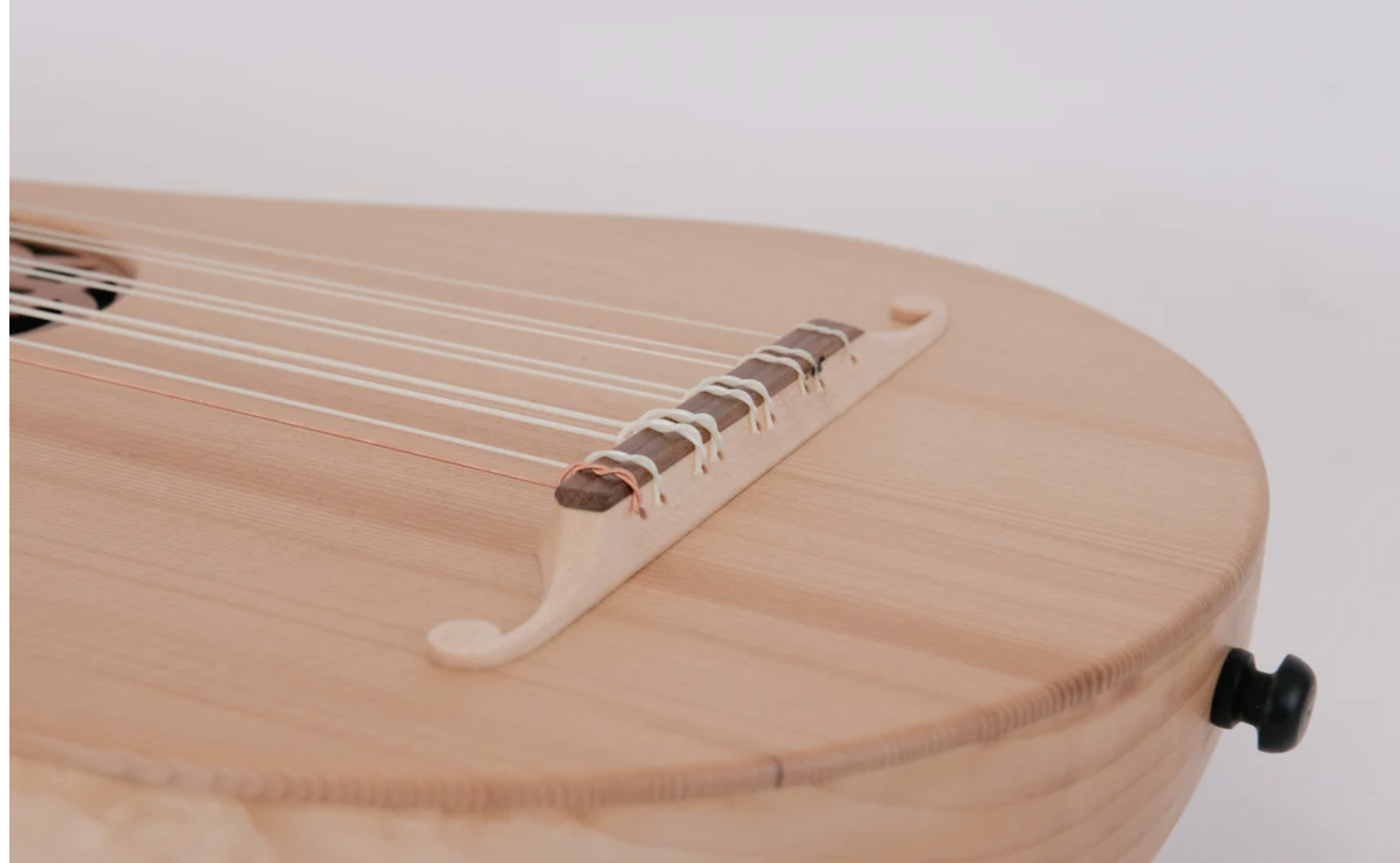
The back, neck and pegbox were probably usually carved from one piece of timber. Occurring less rarely later in the 15th century, the back was built up from a number of thin tapered ribs joined at the edges, as was characteristic of the lute.
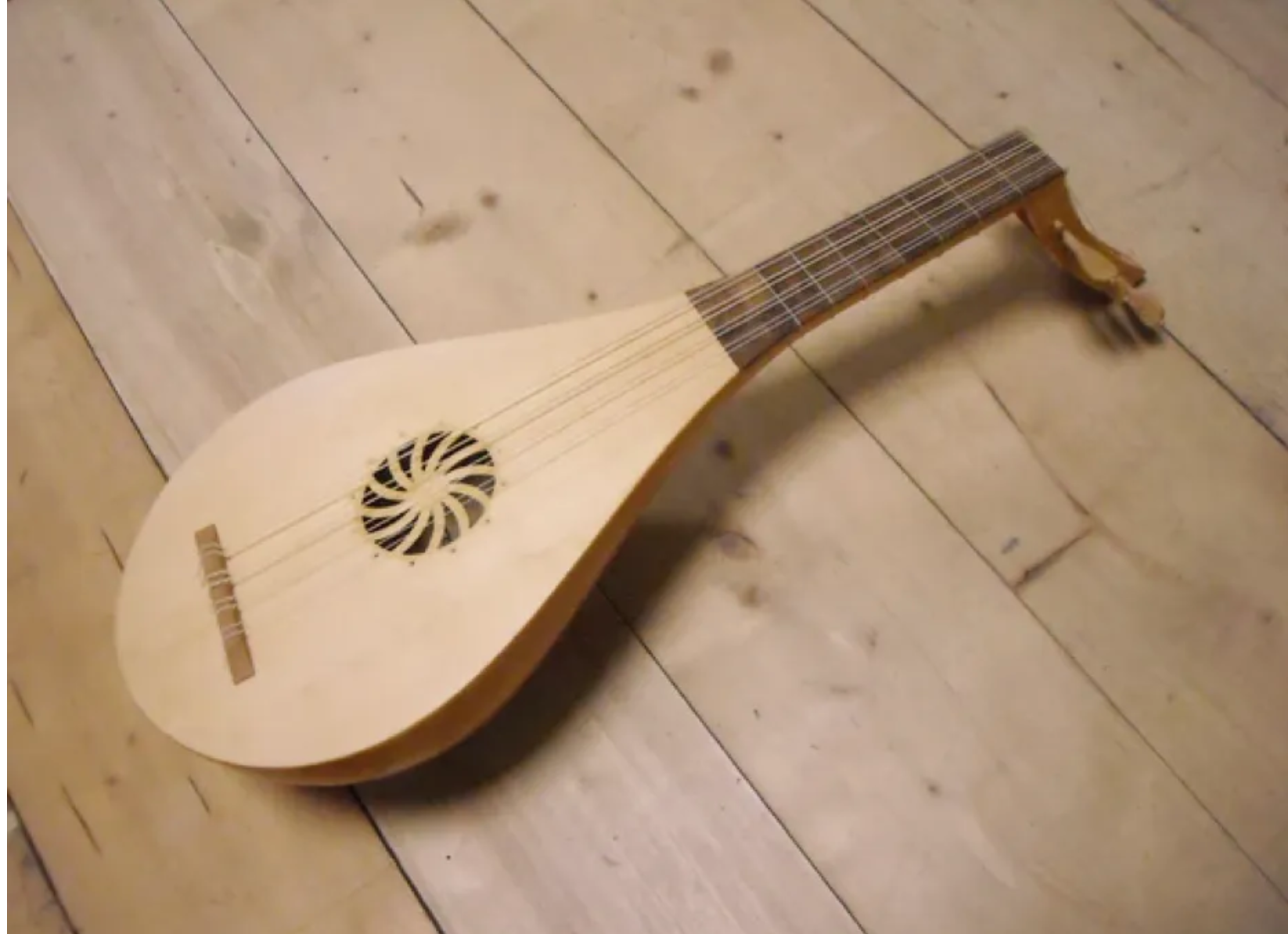
Unlike the sharp corner joining the body to the neck seen in the lute, the gittern's body and neck either joined in a smooth curve or straight line. The sickle, or occasional gentle arc pegbox, made an angle with the neck of between 30 and 90 degrees. Unlike the lute, most pegboxes on gitterns ended in a carving of a human or animal head.
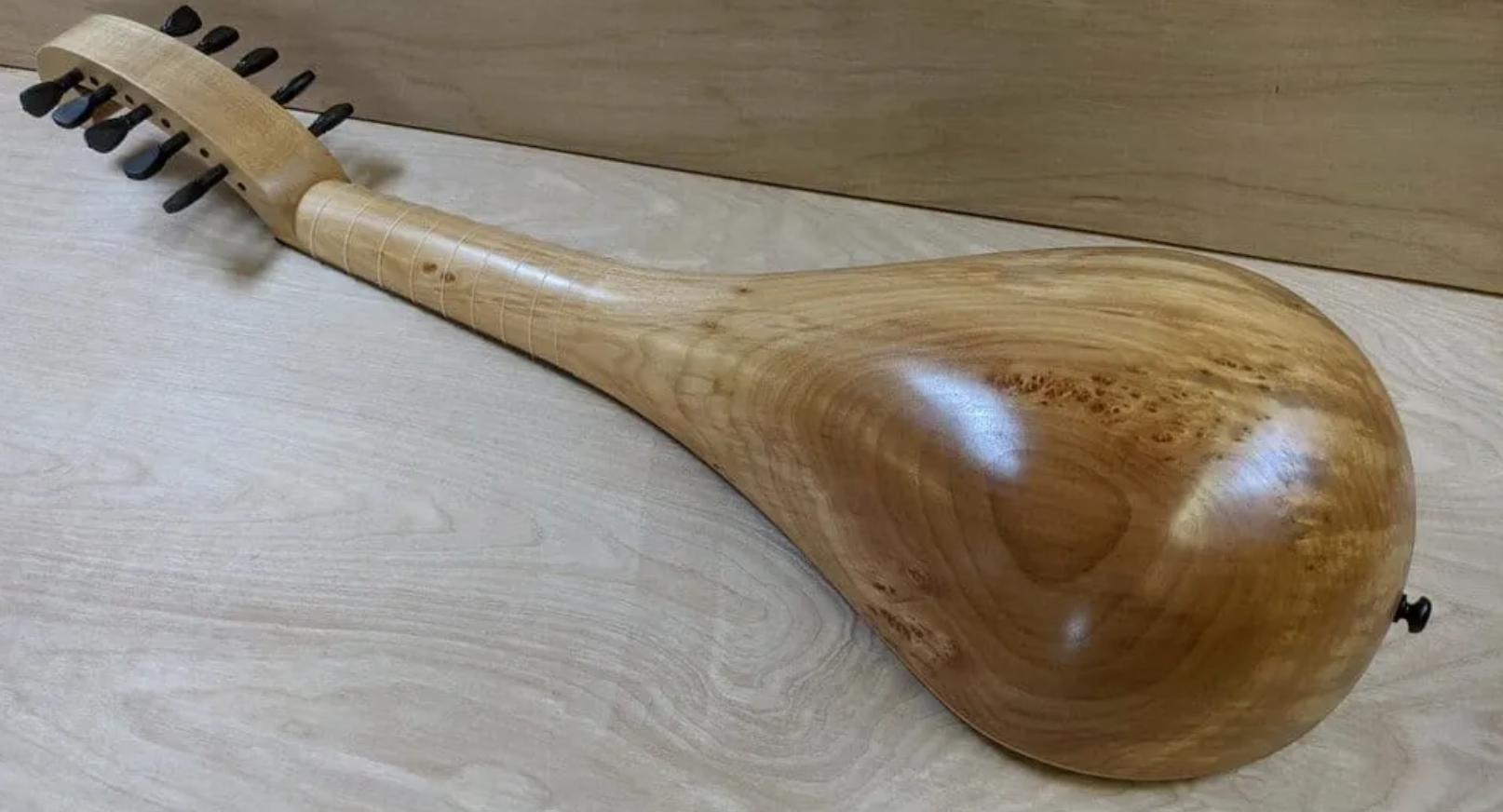
Most gitterns were depicted as having three or (more commonly) four courses of double strings. There are also references to some five course gitterns in the 16th century. Although there is not much direct information concerning gittern tuning, the later versions were quite possibly tuned in fourths and fifths like the mandore a few decades later.
Frets were represented in a few depictions (mainly Italian and German), although apparently absent in most French, Spanish and English depictions. The gittern's sound hole was covered with a rosette (a delicate wood carving or parchment cutting), similar to the lute.
The construction resembles other bowed and plucked instruments, including the rebec, Calabrian and Byzantine lyra, gǎdulka, lijerica, klasic kemençe, gudok and cobza. These have similar shapes, a short neck, and like the gittern are carved out of a single block of wood.
Music creation experience combined with Songdio AI While making and playing the instrument, make some music with Songdio AI to add some fun to your musical life. Songdio AI is a platform that generates music through artificial intelligence, with simplified steps that make it easy for users to create unique music. Users can edit, personalize their work, and generate copyright-free music for different projects and videos, as well as publish it across platforms and receive full royalty revenue.
With Songdio AI, users can:
Discover music: Discover popular music, latest music and random songs that everyone is listening to in Songdio-AI music player to meet users’ needs for different types of music.
Create music: Create your own music with Songdio-AI music player, have fun creating music, and put your creative ideas into practice.
Recently played: Songdio-AI music player can record the user’s recently played songs, making it easy for users to review their favorite music at any time.
Private playlists: Users can create their favorite music playlists, categorize and bookmark according to different moods and scenes.
#gittern #music creation#Songdio #gittern instrument introduction#gittern historical background, #gittern production method# Songdio AI music creation